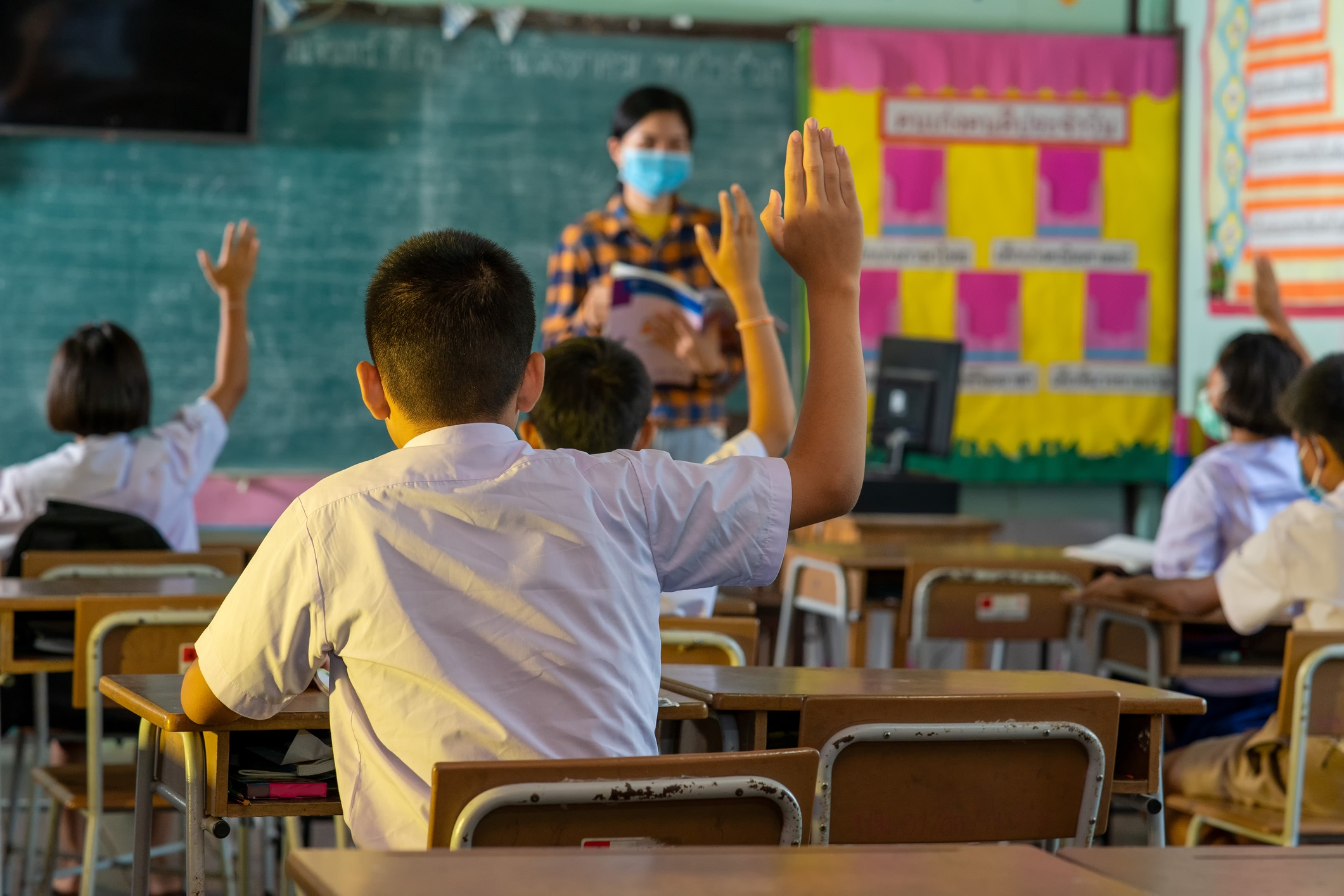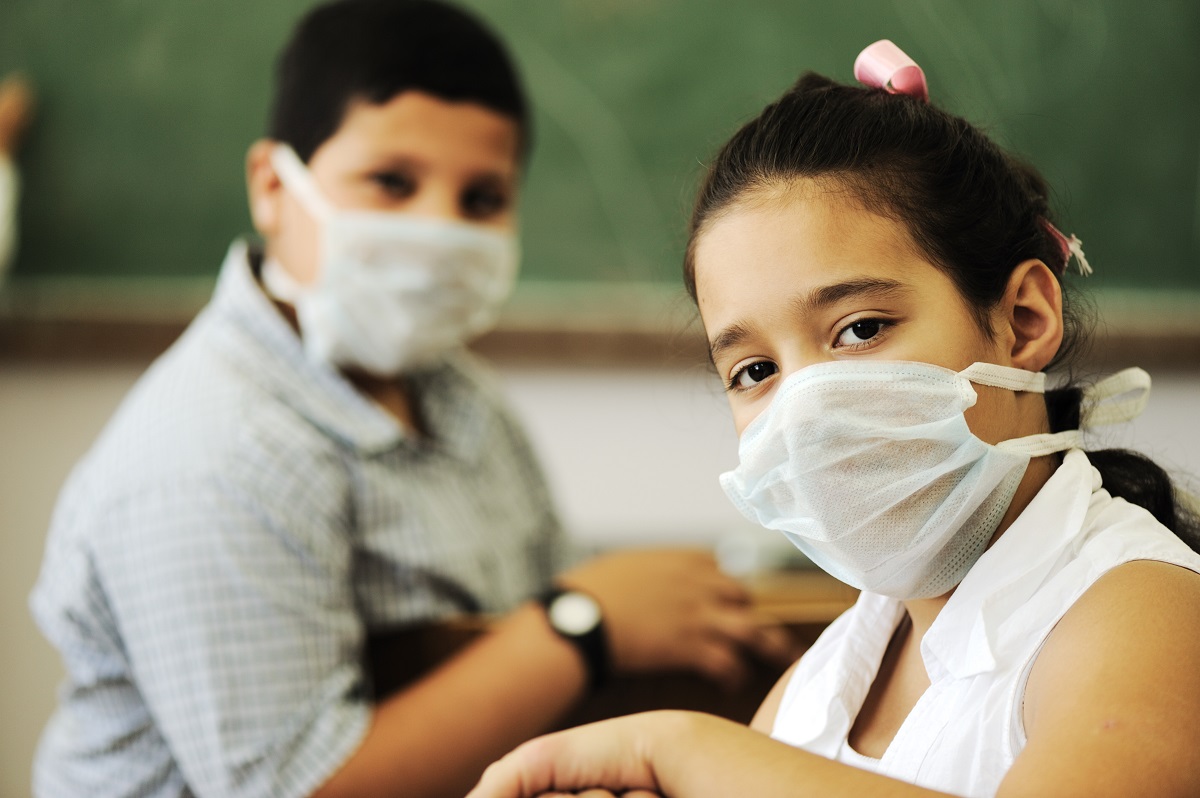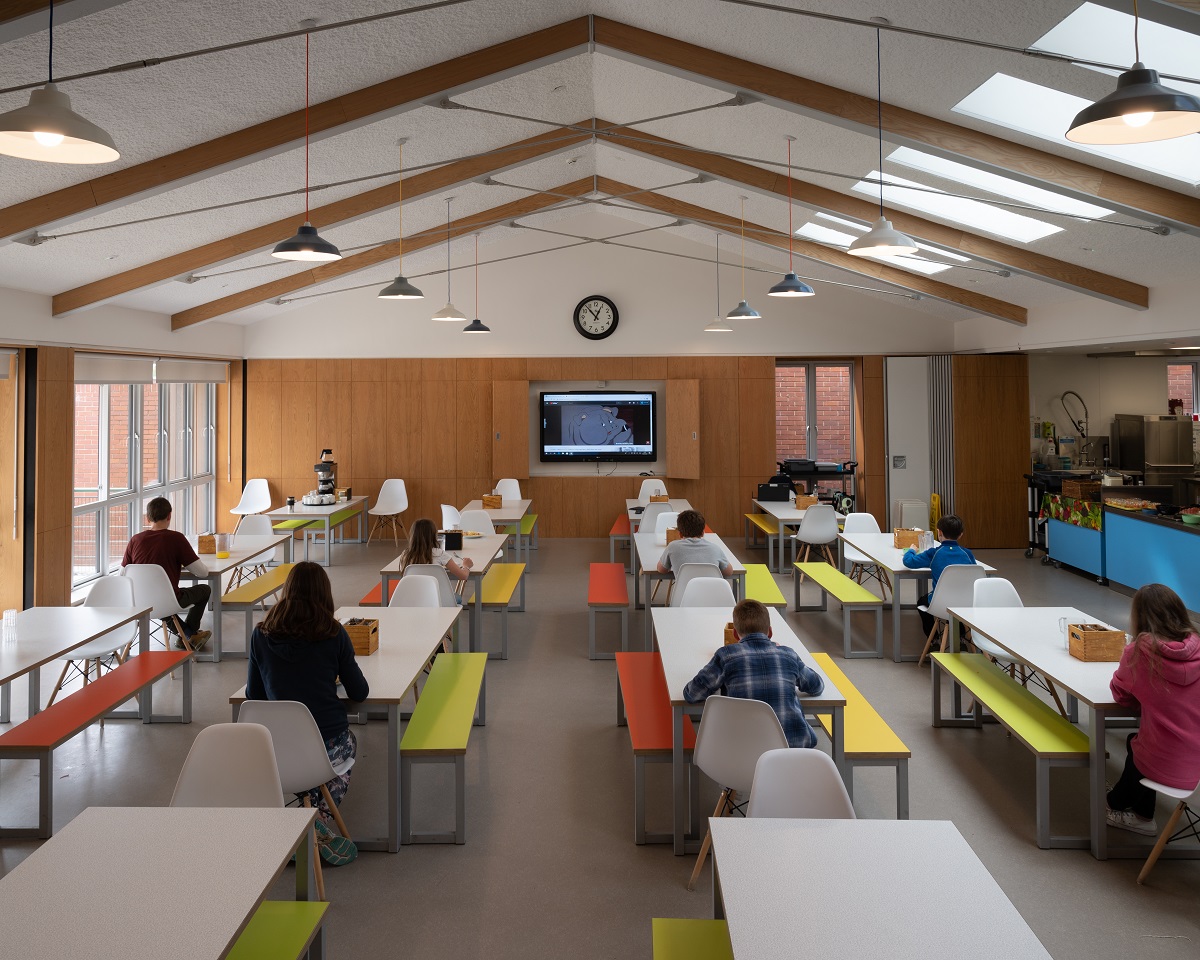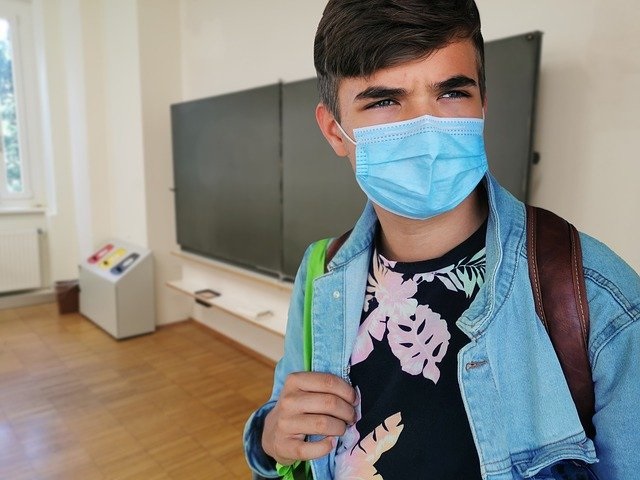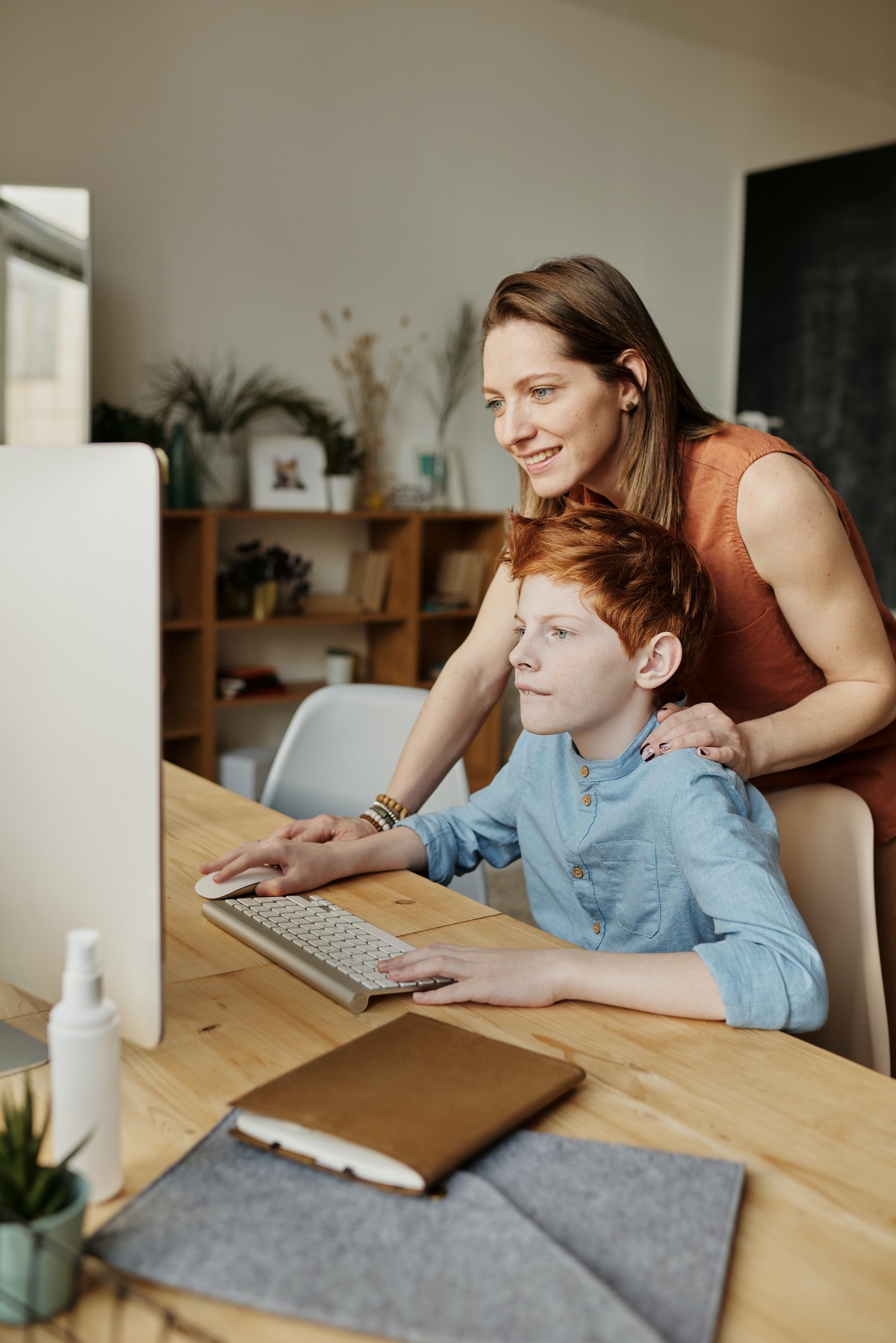Although schools have reopened around the United States, significant questions remain about how they should operate during the COVID-19 pandemic and center primarily on the mode schools should operate: face-to-face, online, or some hybrid of the two. Join me as we undertake an ethical analysis of this complex issue. We will limit our analysis to primary and secondary schools and not consider colleges and universities.
Before starting any ethical analysis, we must first clearly identify the approach and criteria that will guide our analysis. Even though it is not my preferred ethical system, most sound governmental policy decisions are rightly based on utilitarianism. In essence, utilitarian ethical analysis asks: What will result in the most good for the most people? In this case, it is appropriate to narrow the impact on people to the specific populations who are primarily impacted by the decision. For this analysis we will limit our analysis to those most directly involved in and affected by the decision: the students, faculty, and staff of schools and those in their immediate households. Standard utilitarian analysis requires you to look at the consequences to everyone. Nevertheless, neither the well-being nor the lives of school children should be sacrificed to achieve broader social goods. Consequently, our ethical analysis will not consider the economic impact of having schools open nor its impact on any political party or candidate.
In short, decisions about reopening schools should be based on what provides the most good for students, teachers, staff members, and family members of these groups. So how do we go about making such an ethical decision? We analyze and determine the likely benefits and costs of opening schools for students, teachers, staff, and their families and compare them to the benefits and costs of the other options.
Proper Utilitarian Analysis
A proper utilitarian analysis will adhere to the following four standards when determining the impact (costs and benefits) of each alternative solution.
First, utilitarian analysis is based on a fair and unbiased projection of likely results. It should not be based on what one hopes or wishes the results to be. It must also be free of political biases, including generalized claims about “how the world works.” For example, Congressional conservatives often argue that cutting taxes benefits everyone because cutting taxes stimulates the economy. A utilitarian analysis rejects using such a generalized belief about how the economy works and instead undertakes an objective analysis to determine whether a specific tax cut proposal would, in fact, stimulate the economy and whether the benefits of such a proposal would outweigh the costs.
Second, proper utilitarian analysis includes “both sides of the ledger.” That is, relevant positive and negative consequences of a proposal must be included. Oftentimes, advocates arguing for a policy will list all the benefits of those policies they support and the costs or negative impact of policies they oppose. Utilitarian analysis requires identifying the positive and negative impacts of all policies—whether one is advocating for it or not.
Third, utilitarian analysis anticipates and includes unintended consequences. This, too, can be difficult, but it is part of the consideration. Considering unintended consequences is necessary because often taking action in one area has unintended consequences in other areas. When one has the advantage such as the Congressional Budget Office such experts are skilled at doing this analysis. For the rest of us, we must ask, “Deferring to experts and full-time researchers when available, what are the various ways that the proposed policy is likely to impact those directly and indirectly involved?”
Fourth, proper utilitarian analysis accounts for the unknown. Such an idea may seem strange at first: How can anyone consider what is not known? Utilitarianism recognizes that “predicting the outcome” or future is fraught with uncertainty. Utilitarian analysis accounts for unknowns in three major ways. First, utilitarian analysis conducts research and consults with experts to determine what, even if not immediately knowable, can be determined. Second, when there are multiple possible outcomes, utilitarian analysis weights multiple likely outcomes alongside those that are certain. Finally, utilitarian analysis readily changes assessments when new information becomes available.
With this basic understanding of how to conduct utilitarian ethical analysis, let us move on to the analysis of reopening schools.
Benefits to Reopening Schools
Children need to be physically present in schools because children generally benefit from in-person learning. Their future depends on the education they receive in schools. Their education consists of the curriculum, but it also includes the socialization and life skills that children learn while being present in school.
In recent decades, more and more children have been home-schooled and student enrollment in online schools has increased. Nevertheless, such forms of education are not practical options for all children since they are effective only when parents have the time and skills needed to lead and facilitate such education. And even if quality education does happen in the home, other activities must be arranged for those students to gain the social and life skills they need. For many students from low-income families, school may be where they receive one or two nutritious meals each day and other important services.
As a result, students are more likely to receive a complete quality education in face-to-face settings. The benefits are even more significant for students who do not come from middle- or upper-class families. Even when school districts have done a good job of providing computers to children from families who do not have such equipment; many such families still do not have the wi-fi to allow such computers to operate online-education. Pictures have emerged of children sitting on sidewalks near fast-food restaurants with their computers using the restaurant's wi-fi to do online schooling.
It is challenging to quantify the benefits of face-to-face schooling; however, it is probably impossible to overstate how immense these benefits are to students.
It is challenging to quantify the benefits of face-to-face schooling; however, it is probably impossible to overstate how immense these benefits are to students. Even if advocates of opening schools seem to have mixed motives, including, inappropriately, political ones, they are not mistaken about the educational benefits to having schools open in a face-to-face mode.
The educational impact to students not in face-to-face schools could put, especially students already disadvantaged, at an even larger life-long disadvantaged position. We already have an unequal society, not having schools open in face-to-face mode are far more likely to worsen rather than improve these inequalities.
Families would also benefit from having students back in face-to-face schools. The most obvious benefit is to the parents who would be able to return to work when their school-time responsibilities return to pre-pandemic levels. If schools were to reopen, parents who were unable to work due to child-care and additional classroom responsibilities in Spring 2020 would be able to work during school-time hours. At first glance, this might appear to help those at the lower end of the economic scale. However, I suspect that it is just the opposite. It may most impact middle-class and above parents who no longer need to juggle working from home and doing the child-care and child-education during the day. For lower-income families, the economic benefits only take place if there is full-time face-to-face schooling. Not many low-income employers will provide a flexible enough schedule to allow for hybrid modes or even the unpredictable schedules when schools start face-to-face, but then change modes and schedules because of a COVID-19 outbreak in the school. Also, many low-income families live in multi-generational households. If these parents still have jobs amid the pandemic, they have continued to work while other generations looked after children. Unfortunately, more likely is that there are no jobs for low-income people. However, overall, there is no doubt some economic benefits for families with the reopening of schools in face-to-face modes, but this benefit is probably not as large as the advocates of reopening claim.
There are societal benefits to having schools open in a face-to-face mode. However, as I set out above, these should not be a focus of analysis. For example, clearly there are economic benefits to opening schools. It probably opens some people to be able to work or to work more efficiently and ancillary businesses such as school bus companies and their employees can return to operations. However, even though such benefits exist, we should not include them in our assessment because our focus is on those most directly involved in and affected by the decision (i.e. the students, faculty, and staff of schools and those in their immediate households).
The Cost of Reopening Schools
The most basic fact is that we do not know the COVID-19 dangers for students, faculty, staff, and their families for schools reopened in a face-to-face mode. There is just still so much we do not know about the disease. Any utilitarian ethical analysis must include large factors of the unknown into its calculations.
The most basic fact is that we do not know the COVID-19 dangers for students, faculty, staff, and their families for schools reopened in a face-to-face mode.
Opening schools at this time may be the equivalent of playing craps with the lives of the children of this nation as well as teachers, staff, and their families. Ethically, that is a difficult position to justify even though there are considerable advantages to having schools open.
Unfortunately, politics seems to be the driving force in some of the decisions. Nebraska Governor Pete Ricketts said that policymakers and not health officials should decide on school openings. The Centers for Disease Control (CDC) put out guidelines for the safe reopening of schools, but President Trump did not like them and pressured the CDC to put out revised guidelines based on the political benefits rather than the best scientific analysis of the health factors. Such political moves say that the safety and impact on students, teachers, staff, and their families are not the primary focus, but quite the opposite, politicians seem willing to sacrifice these people in the name of other concerns. Even under a utilitarian analysis, that is unethical.
With so many unknowns, what can we discover about the cost of reopening schools?
The President has said that children are virtually immune from COVID-19. Factually, that is entirely incorrect. The only people who may be "immune" are those who have had the disease and recovered, and even then, we do not know how long that immunity lasts.
Early in the pandemic, children did seem to contract the virus less often than adults, and when they did, they appeared to have severe complications at a rate less than adults.
However, the apparent facts pointing to less risk for children from COVID-19 may be the results of other factors as opposed to children reacting differently to the virus than adults. Since the outbreak of the pandemic, both the raw numbers and the rate of infection in children has risen over time. We do not know the actual rate of infection among children because the testing of children has been so limited.
However, the apparent facts pointing to less risk for children from COVID-19 may be the results of other factors as opposed to children reacting differently to the virus than adults.
Moreover, children are likely to have had the least exposure to the virus because schools closed in the spring and children were mostly kept at home. That changes as we open schools in modes that include in-school instruction.
The tracking shows that since schools started to reopen in mid-August until the end of October there have been more than 400,000 new cases among children. During the same time-frame more than 2,000 children have been hospitalized and 31 children have died from COVID-19
At least within the limited data we have for children, the CDC reports that children between ages 5 and 17 have the highest positivity rate of any age group (higher than 10%). The American Academy of Pediatrics and the Children's Hospital Association have jointly tracked the impact of COVID-19 on children. The tracking shows that since schools started to reopen in mid-August until the end of October there have been more than 400,000 new cases among children. During the same time-frame more than 2,000 children have been hospitalized and 31 children have died from COVID-19.
This is not the impression of the risks to children that we have been hearing in the media, let alone from some politicians. Children are less likely than adults to get serious complications when they contract COVID-19; however, those who have severe complications and are hospitalized, about one-third end up in intensive care, which is the same rate as adults.
In a typical year, 400 children die of influenza (flu). At first look it may appear that COVID-19 is a much a lower risk than the flu for children. But that conclusion is unlikely to be correct, given other differences. There have been 131 COVID-19 deaths among children since the beginning of the pandemic in the United States. Those deaths are not from a full year of in-person school and last spring most schools were closed. Moreover, although we have a flu vaccine that significantly mitigates the outbreak among students, staff, and families, there is, as of yet, no COVID-19 vaccine. The flu is not a pandemic; COVID-19 is.
In addition, after having COVID-19, at least 570 people under age 21 have later developed the mysterious MIS-C, a multi-system inflammatory syndrome. This is another danger to children with schools open in face-to-face modes.
It appears the danger to children from COVID-19 is much greater than has been widely promoted by politicians and the media.
Then the question arises as to the degree to which children spread the disease to other children, faculty, staff, and their families. The early data on children as spreaders of the disease is inconclusive.
It appears the danger to children from COVID-19 is much greater than has been widely promoted by politicians and the media.
One study from South Korea, often cited on the topic, concludes kids ages 10-19 spread COVID-19 at the same rate as adults but that those under ten did not cause much spread. However, that was a small study, and its results may again reflect the fact children were not in school at the time, thus keeping the most sheltered from the disease. Also, claims that children will not be significant spreaders of COVID-19 are contrary to the experience of parents and teachers of young children who can testify that they are excellent spreaders of other diseases in the classroom and the household.
The American Academy of Pediatrics has found substantial community spread in many places corresponds with more infections among children. That would indicate the possibility that children can be efficient spreaders of the virus. Many teachers and school staff are in high-risk categories, meaning that if they contract COVID-19, they are high-risk for serious complications or even death. Many advocates of school reopening have pointed to the low risk to children (which the above shows is likely incorrect) but completely ignore the risk to faculty and staff. Then one must add the families of the students, faculty, and staff. Those would also include many high-risk members. There is growing scientific evidence that children, even as young as preschool, can spread the disease to teachers and parents. While outside the area that this analysis is considering, infected students, faculty, staff, and their families could also be agents of wider community spread of COVID-19.
Some colleges have returned to online classes for the rest of the semester, while others have moved to online class for a period until the virus can be brought under control on campus. On numerous campuses, entire dormitories, fraternities, and sororities have been quarantined. According to tracking done by the New York Times, there have been at least 171,000 cases at colleges since late July. Also, at least five college students have died since the Fall opening of colleges including a football player at California University of Pennsylvania.
Across the country, primary and secondary schools which opened face-to-face have returned to online classes. In Mississippi, where most students have returned to school in face-to-face modes, one-half of the state's counties reported cases in their schools. These unsuccessful restarts do not bode well as more and more schools reopen. Also, I am aware of at least eight teachers and four school staff members who have died of COVID-19 since schools have opened. Getting exact numbers is difficult because the federal government is not tracking nor releasing information on the impact of COVID-19 in our schools.
Ethical Calculus
We are weighing the educational and socialization losses to students without face-to-face instruction versus the risk to the health and even the lives of students, faculty, staff, and their families.
There is much we do not know, and little that we can accurately calculate as we try to do the utilitarian analysis as to what is the right thing to do regarding schooling during this pandemic. At the most basic level, we are weighing the educational and socialization losses to students without face-to-face instruction versus the risk to the health and even the lives of students, faculty, staff, and their families.
At first blush, that calculation seems obvious: lives versus educational loss looks like an easy choice for life. But it is not quite that simple. Almost every activity involves risk, even the risk of death. Children die from flu contracted at school each year. Students, faculty, and staff members die from car accidents as they commute to school. Unfortunately, children die from shootings at school. While we do not usually think of it in these terms, it is not possible to make schooling (or any other activity) completely risk-free.
Education is crucial to a successful and happy life. So, the real question is, what is an acceptable level of risk to the health and lives of students, faculty, staff, and their families for the educational benefits of face-to-face school during this COVID-19 pandemic? How much damage to these population's health and how many lost lives are we willing to accept for the educational advantages of face-to-face schooling?
What is an acceptable level of risk to the health and lives of students, faculty, staff, and their families for the educational benefits of face-to-face school during this COVID-19 pandemic?
Reducing the Risks
To answer the acceptable risk question, we need to explore how to reduce the risk of students, faculty, and staff from contracting COVID-19 while they are present at school. Here we are addressing the way schools should be open. Individual parents may come to more restrictive answers about how much risk they are willing to submit their children to gain the educational advantages of face-to-face schooling. On the societal level, we need to accommodate such decisions. For instance, even if a local school decides to open face-to-face or in a hybrid mode, they need to provide an online option.
The CDC has put out useful guidance for reopening schools. Unfortunately, political influences have impacted the CDC. Media reports indicate they have underplayed the risks to children. Another place where I find that the CDC buckled to political pressure is that while it provided guidance, it ultimately left all decisions to the local level. That is shirking its historic scientific responsibility as it should have laid out minimum requirements for schools to be open while making additional recommendations on how to further reduce the risk of COVID-19 transmission. The CDC document does not make such a separation between requirements and helpful guidelines. Nevertheless, the contents of the CDC's documents contain the correct guidance and strongly influences my analysis below.
The risks can only be reduced for schools when the local community has an acceptable level of infection. There is a clear scientific standard. The 7-day rolling average of the positivity rate must be 5% or lower. Anything higher means the community is at such a high level of infection that it is not safe for students, faculty, staff, and their families to have any face-to-face contact in schools. This would preclude hybrid models as well. When the community positivity rate is above 5%, the risks are too high for anything but virtual or online schooling.
Social distancing is a second way to reduce risks. In terms of schools, this means keeping students six-feet apart as much as possible. Social distancing is challenging to do, especially in urban schools. Because the United States has so seriously underfunded urban schools, classrooms are often overcrowded. In urban schools, this can mean 40 students in a classroom, making social distancing impossible. The best way to handle this is in a hybrid mode, in which only half of the students are present in a school at a time. The problem with this hybrid mode is that it creates an unrealistic workload for teachers. While the number of students per teacher does not increase in a hybrid mode, teachers have two classrooms to teach simultaneously: one face-to-face and one online. Creating twice as many engaging lessons and teaching both face-to-face and online every day is not sustainable or realistic. The hybrid mode done with any level of integrity would require twice as many teachers.
Third, masks are, absent a vaccine, the most effective way to prevent the spread of COVID-19. While there must be exceptions for those with certain health conditions and specific students with disabilities, every other student, faculty, and staff member must always wear masks while in school buildings. The same is true while riding school buses or using public transportation while commuting to and from schools. Without masks, the risks are too high. With masks, combined with other measures, we can bring the risks down to acceptable levels. No school in the United States should operate without masks being a requirement. Doing so is unethical.
Fourth, regular hand washing reduces the risk of transmission of the virus. Consequently, frequent hand washing must be part of the routine of any school that is to be open. Teachers must stress the importance of hand washing at every grade-level, and it must be included in the daily schedule. Also, hand sanitizers need to be readily available throughout school buildings.
The fifth way to reduce the risks when reopening schools is by cleaning and disinfecting the school buildings and objects. For most school districts, this will require more specialized cleaning agents and equipment and increased cleaning frequencies. All of this will require more resources, which is incredibly difficult for the most underfunded urban districts. However, the more proper cleaning that can be done, the more we reduce the risk to students, faculty, staff, and their families.
A sixth way to reduce the risks of spread is to ensure schools have modern and efficient ventilation systems. The Covid-19 virus spreads through airborne droplets. These come from the mouth and nose of humans. Most droplets fall to the floor within an area of 6 feet (the reason for social distancing). But this is not the case for all droplets, and they can stay in the air for extended periods. Proper ventilation systems can remove most of these droplets. Unfortunately, the under-funding of schools means that many school buildings do not have adequate ventilation. Some school buildings have such bad ventilation raising the risk to unacceptable levels. These buildings must not be used until upgraded.
The CDC has recommendations for other ways that schools can reduce the risk of transmission. These include recommendations about the water systems, modified layouts, physical barriers and guides, communal space, food service, scheduling, transportation, leave time, and training. The more these recommendations can be implemented, the safer schools will be for students, faculty, staff, and their families.
Conclusion
However, in exploring the issues more carefully, I believe that opening some schools in face-to-face mode can be morally justified if they follow CDC guidelines related to transmission rates and take significant steps to mitigate transmission risks.
In weighing the various issues, the importance and value of face-to-face schooling is a large factor. Online schooling can be done well, but it takes a great deal of time to create quality online learning. Even when done at an excellent level, it misses the crucial social skills children acquire in school. Social learning is as important as the official curriculum to the development of our children and youth. A recent prediction by Dr. Anthony Fauci that, even with a workable vaccine, life will not return to anything approaching pre-COVID-19 days before the end of 2021 was incredibly significant. It would cause a huge impact on students' development to have schools closed during this entire school year and perhaps into the next. While we cannot quantify the amount of educational loss that our students have from not being in face-to-face schools, it is so large that we must do everything that we can do to have schools open.
However, we must make it clear: Opening schools will cause some students, faculty, staff, and their family members to get sick and die. COVID-19 is such an effective spreader that we cannot reduce the risk to zero. However, we must do everything possible to minimize the risks. It is unethical to open schools without doing at least the following.
Opening schools will cause some students, faculty, staff, and their family members to get sick and die.
- 1The positivity rate for the area/city in which a school is located must be 5% or less, using a 7-day rolling average. If the rate is higher, there is too much of the virus circulating in the area to reduce the risks to an acceptable level. Schools must not open if the rate is above 5%, and they must close if they are already open until the rate falls to 5% or below. Schools must be in a virtual mode during these times.
- 2Schools must provide as much social distancing as possible. In over-crowded schools, a hybrid mode may be the only way to achieve an acceptable level. Relief for teachers, including the hiring of extra teachers, may be required in a hybrid mode.
- 3Masks must be a requirement in all schools that are open in face-to-face modes. At present, masks provide the best protection from the spread of the virus. Exceptions for those with certain health conditions and some special education students will need to be made.
- 4Hand washing and the use of hand sanitizers must be included in the school schedule each day.
- 5Schools must do regular and extensive cleaning and disinfecting using products proven to be effective against COVID-19.
- 6To the largest extent possible, open schools must implement CDC recommendations for ventilation systems, water systems, modified layouts, physical barriers and guides, communal space, food service, scheduling, transportation, leave-time, and training.
Sources
American Academy of Pediatrics. https://www.aap.org.
Amy, Jeff and Feldman, Carole. "CDC Head Sticking To School-Opening Guides Trump Criticized." AP News. July 9, 2020.
Anderson, Nick. "UNC-Chapel Hill Pivots to Remote Teaching After Coronavirus Spreads Among Students During First Week of Class." Washington Post. Aug. 17, 2020.
Bolling, Cristina and Hubler, Shawn. "A Student Dies and a Campus Gets Serious About Coronavirus." New York Times. Oct. 5, 2020
Cassimeda, Reneae. "Four US School Employees and Two College Students Killed by COVID-19 This Week." WSWS.org. Oct. 1, 2020.
Centers For Disease Control.https://www.cdc.gov.
Centers for Disease Control. "Operating Schools During COVID-19: CDCs Considerations." CDC.gov. Sept. 1, 2020.
Children's Hospital Association and American Academy of Pediatrics. "Children and COVID-19: State Data Report." Oct 29, 2020.
Edwards, Erika. "Kids at Day Care Spread COVID-19 to Parents and Teachers, CDC Says." NBCNews.com. Sept. 11, 2010.
Gupta, Sanjay. "Why I Am Not Sending My Kids Back to School." CNN.com Aug. 12, 2020.
Hawkins, Derek and Iati, Marisa. "Coronavirus Infections are Rising in Children, CDC Says." Washington Post. Aug. 16, 2020.
Leatherby, Lauren and Jones, Lisa Waananen. "U.S. Coronavirus Rates Are Rising Fast Among Children." New York Times. Aug. 31, 2020.
McEvoy, Jemima."At Least 6 U.S. Teachers Have Died From Coiv-19 Since Schools Reopened." Forbes. Sept. 10. 2020.
Rozsa, Lori and Strauss. "Coronavirus Cases Spike Among School-Age Children in Florida, While State Orders Some Counties to Keep Data Hidden" Washington Post. Sept. 9, 2020.
New York Times. "Tracking Covid at U.S. College and Universities." Oct. 16, 2020
Willis, Chelsea; Janes, Chelsea and Cha, Ariana Eunjung. "Children and the Virus: As Schools Reopen, Much Remains Unknown About the Risk to Kids and the Peril They Pose to Others." Washington Post. Aug. 10, 2020.


